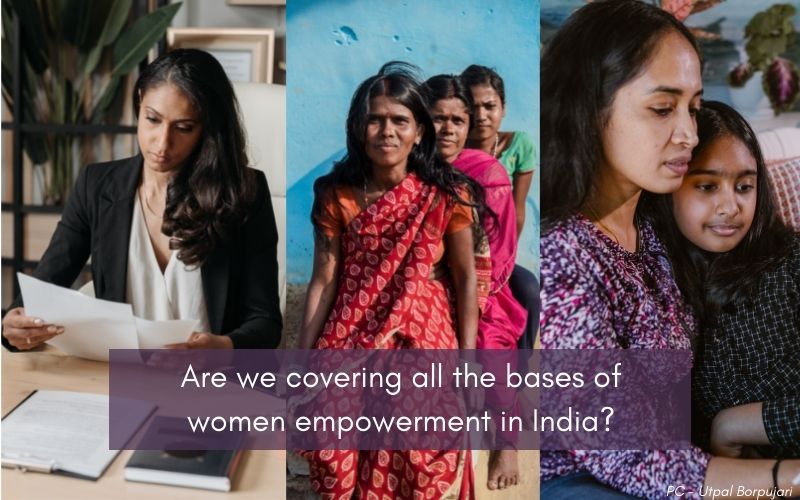
Are we covering all the bases of women empowerment in India?
Here’s a question - Are women and men walking the path of development head to head in today’s society? I’ll not keep you hanging till the end of this article to express my opinion on the matter. I don’t think we are.. just yet.
Indeed, women rights have progressed in leaps & bounds over the years after much struggle. But ours is a patriarchal society, and we are talking about undoing centuries worth of conditioning in order to achieve a completely unbiased society where men and women can share equal roles in the upliftment of society.
A simple look at the literacy rates for males and females in India tells a lot. As per National Statistical Office (NSO) based on 2017-18 data, the country wide female literacy rate stands at 70.3%. This is 14.4% less than the male average at a nation-wide level. Now if we look a little deeper into state-wise analysis, Rajasthan, Andhra Pradesh, Bihar, Uttar Pradesh and Jharkhand feature into the bottom 5 states with lowest female literacy in India; portraying a higher disparity in literacy among males and females. Of the lot, Rajasthan records the highest disparity, with their female literacy rate pegged at a little over 50%, and 23% lesser than the state-average of male literacy rate (80.8%).
We have the Beti Bachao, Beti Padhao campaign launched by the Govt. of India to amp up the number of female literates in India, and some notable success has definitely been recorded. The 86th edition of PM Narendra Modi’s ‘Mann ki Baat’ talks about the improving male vs female ratio in India, higher percentage of girls going to school than before, and reduction of various gender-specific social evils. There is also a lot of praise for successful women taking on bigger responsibilities in traditional male-oriented careers such as aviation and defence.
However, the number of women taking up those roles compared to men are far less. And the root causes which do not even allow many women to think beyond ‘gender-appropriate’ professions, go unnoticed. Talking about careers, since the pandemic outbreak, women participation in India’s labour force fell down to a staggering 16.1% in the Juy-September 2020, as per a Govt. report - lowest among the major economies. The reason why working women were one of the worst hit groups is because the majority of employed women work in low-skilled sectors, which were hit hard by the pandemic.
Contrary to this, only a miniscule percentage of women in India have a voice in top-ranking professions. We celebrate those women and set examples of these powerful women for our younger generation of girls to look up to. However, we are missing a big part of the equation here - while women step outside of the house to make way for bigger changes, majority of the men aren’t doing much to share responsibilities at home - leaving the ambitious women folk (with husband, children and in-laws) to cap their wings after a certain age.
Today, you’ll see many thriving 20-30 year old women excelling in their respective fields of profession. But that number diminishes with age, especially after embracing motherhood. This isn’t because women aren’t capable of accomplishing bigger success after a certain age. The likes of Indra Nooyi, Nirmala Sitharaman and Falguni Nayar tell us otherwise. But the bitter reality is that there aren’t many initiatives taken to encourage the male counterpart to share responsibilities in household chores and in raising children.
Change in policies only gets us so far. Why does the struggle stop when a woman manages to secure an ‘earning’ status in the society? Do we bother to check in on how many women keep their private jobs (and get promotions) till the minimum age of 60? And what of men’s role in supporting their spouse’s career through sharing of household responsibilities? This year’s International Women’s Day calls for breaking the bias. So, while we do our bit in promoting women empowerment, let us also engage the men in our lives in getting a sense of their involvement in actually breaking the bias. Because, the bias begins at home.
Disclaimer: The opinions expressed in this article are those of the author's. They do not purport to reflect the opinions or views of The Critical Script or its editor.

Newsletter!!!
Subscribe to our weekly Newsletter and stay tuned.

















Related Comments